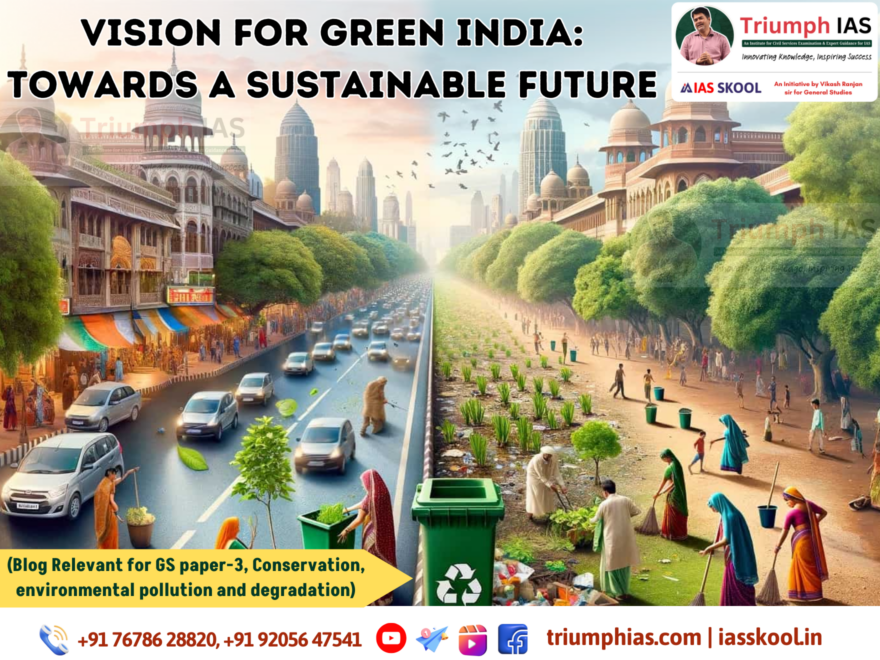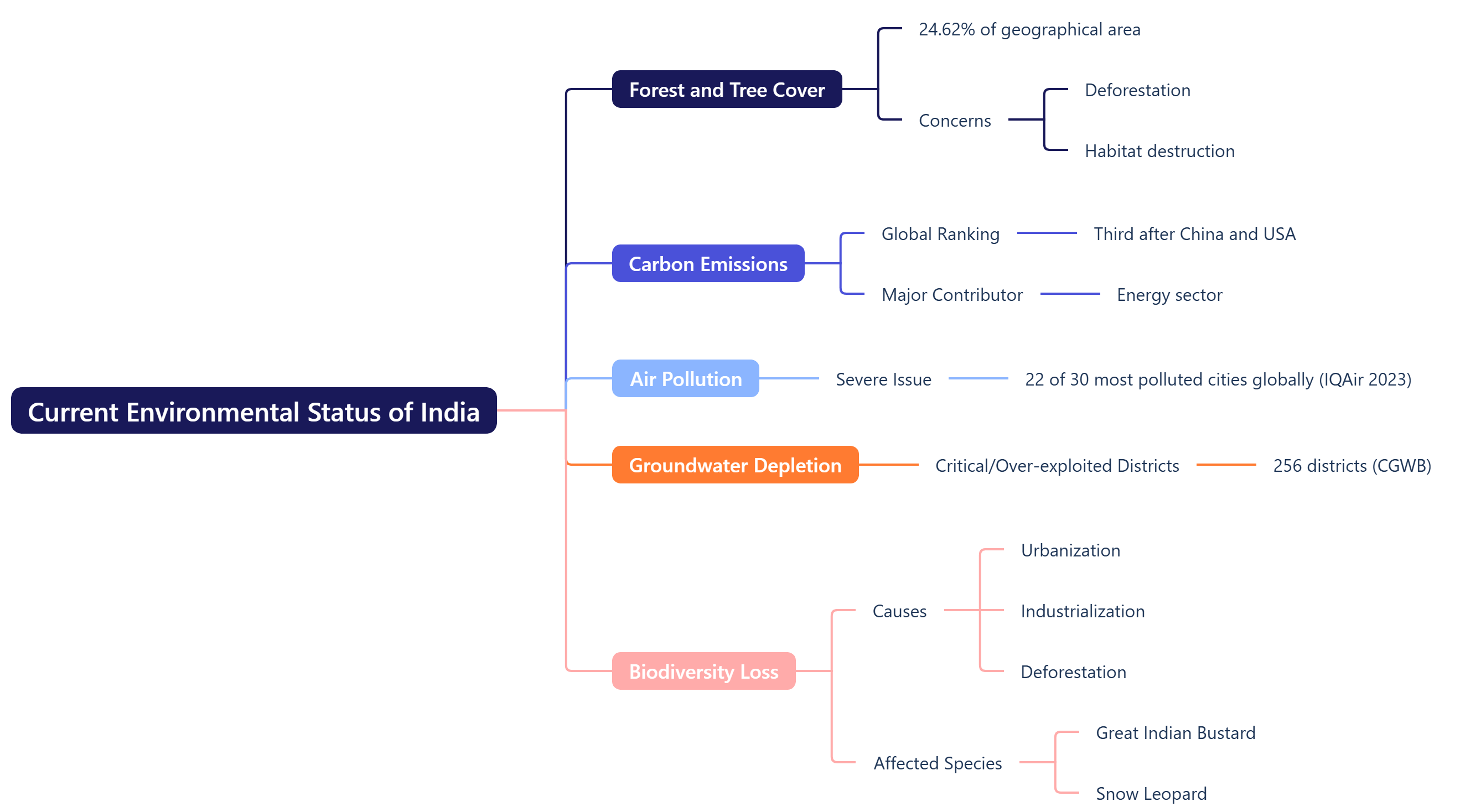Vision for Green India: Towards a Sustainable Future
(Relevant for GS paper-3, Conservation, Environmental Pollution and Degradation, Environmental Impact Assessment, Inclusive Growth and Issues Arising from it.)
|
India, as one of the world’s fastest-growing economies, faces the challenge of balancing development with environmental conservation. The Vision for Green India aims to promote ecological sustainability, enhance forest cover, mitigate climate change, and ensure a greener future for coming generations. Current Environmental Status of India
Challenges to Achieving a Green India
Unregulated urban expansion, mining, and infrastructure projects have led to significant loss of green cover.
Industries, vehicular emissions, and untreated waste discharge contribute to deteriorating air and water quality.
Rising temperatures, erratic monsoons, and frequent extreme weather events affect agriculture and livelihoods.
Despite renewable energy growth, coal still accounts for nearly 50% of India’s energy needs.
Inadequate recycling, increasing plastic waste, and improper disposal of e-waste remain major environmental challenges.
Many communities lack awareness regarding sustainable practices and conservation efforts. Government Initiatives for a Green India
Launched under the National Action Plan on Climate Change (NAPCC), aiming to increase forest cover and enhance ecosystem services.
Focuses on ecological restoration and increasing tree cover in degraded forest lands.
Provides financial assistance to projects that address climate adaptation measures.
Promotes electric mobility and reduces vehicular pollution.
India aims to achieve 500 GW of non-fossil fuel energy capacity by 2030, as part of its COP26 commitments.
Focuses on waste management, sanitation, and reduction of plastic pollution.
Dedicated to river rejuvenation and reducing industrial pollution in the Ganga basin. Way Forward: Suggestions for a Sustainable Green India
Promote large-scale afforestation and agroforestry to combat desertification and enhance biodiversity.
Strengthen investments in solar, wind, and hydrogen energy to reduce reliance on fossil fuels.
Enforce sustainable development policies and stricter penalties for pollution violations.
Encourage green buildings, efficient waste disposal systems, and eco-friendly public transport.
Develop early warning systems, drought-resistant crops, and water conservation techniques.
Implement education programs to encourage sustainable practices at the grassroots level. ConclusionAchieving a Green India requires a multi-pronged approach involving government action, community participation, and technological innovation. While policies and initiatives are in place, their success depends on strict implementation and collective responsibility. By integrating sustainability with economic growth, India can pave the way for a resilient, eco-friendly, and prosperous future. |



One comment